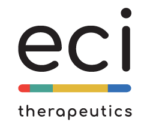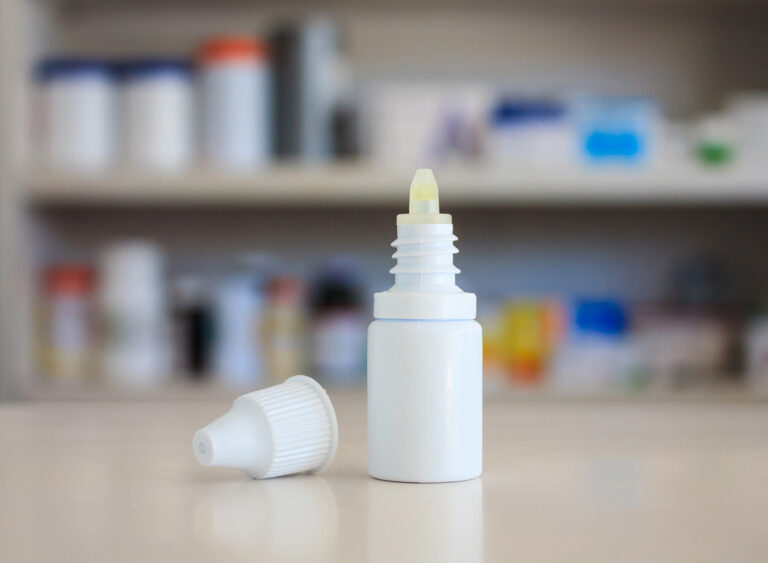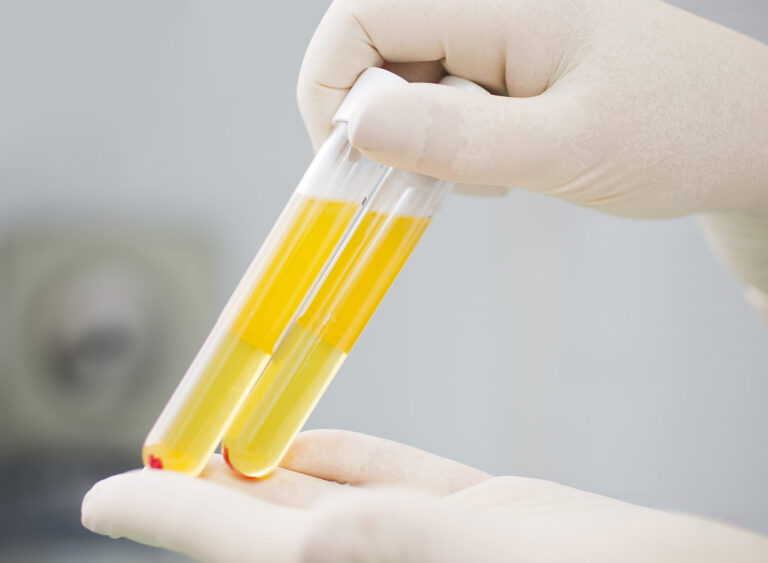addressable population
dry eye treatment
(initial product)
dry eye treatment
(initial product)
$3.1 billion dry eye
(US market)
skin wound
and ulcer care
skin wound
and ulcer care
$24.5 billion wound care
(global)
mucosal membrane
dryness
mucosal membrane
dryness
$600 million dry mouth
$32 million gynecologic dryness





dry eye disease
“Plasma Derived Serum Eye Drops, Chitosan Enhanced”, development project name sermEYES, is our novel plasma-based eye serum that provides accelerated healing of surface wounds on eyes, which includes chronic conditions such as dry eye disease (DED). The product is uniquely powered by proteins extracted from human plasma, which may enhance healing, and chitosan, which is antimicrobial and may allow the eye-drop to remain on the surface longer. The powerful combination of these two components may enable a new and effective therapy.
We are also exploring a formulation for the use in ophthalmic burns!
Key trends contributing to growth
- ↑ aging population
- ↑ autoimmune disorders
- ↑ computers smartphones
- ↑ warmer, drier weather
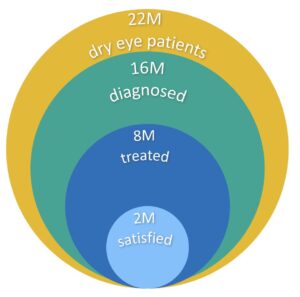

Farrand KF et al. AJO (2017), Dubey VD et al. IOVS (2010), Lum et al. AA of Optometry (2018)
ECI believes it is likely that plasma-derived eye drops will have fewer side effects than current treatments. This belief is based on experience with autologous serum drops.
serum tears (number of clinical trial publications)


global dry eye treatment market size and projected growth
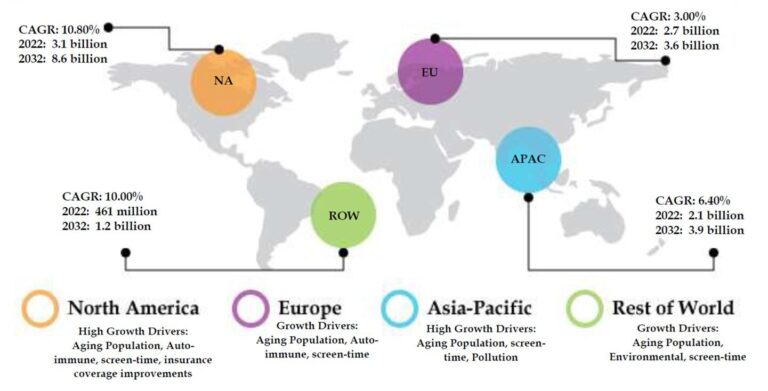

Coherent Market Insights, July 2020





skin wound, diabetic ulcer, and burn care
Key trends contributing to growth
- ↑ Rising Incidence of Chronic Wounds
- ↑ Diabetes Epidemic
- ↑ Technological Advancements
- ↑ Increasing Awareness and Education
- ↑ Shift Towards Active Wound Care
- ↑ Reimbursement & Health Policies
market size in dollars
The global wound care market was estimated in 2021 to be worth approximately $20 billion to $25 billion, as of 2023 that has likely increased to $23 to $27 billion.
+ wound care
+ wound care
Size in Dollars: The U.S., with its advanced healthcare system and a considerable diabetic population, represented a substantial part of the global wound care market, estimated to be worth $8 billion to $10 billion.
Size in Patients: The U.S. had approximately 34 million diabetics in 2021. If we consider the 15% risk factor of developing ulcers, it equates to a potential patient pool of around 5 million just for diabetic foot ulcers.
+ diabetic foot ulcer market
+ diabetic foot ulcer market
Size in Dollars: Diabetic foot ulcers (DFUs) represent a significant portion of the wound care market. As a segment, the diabetic foot ulcer market was valued at around $3.4 billion to $4.5 billion globally.
Size in Patients: With over 460 million diabetics globally in 2021 and approximately 15% (around 69 million) of them at risk of developing a foot ulcer in their lifetime, there is a significant group looking for improved case.
market opportunity for wound care products:
market opportunity for wound care products:
Rising Incidence of Chronic Wounds: With an aging global population and an increase in chronic diseases like diabetes, the prevalence of chronic wounds, including diabetic ulcers, venous ulcers, and pressure ulcers, is on the rise. This growing patient base directly fuels the demand for advanced wound care products.
Diabetes Epidemic: Diabetes is a significant health concern globally, with over 460 million individuals affected as of 2021. Diabetic patients are prone to developing foot ulcers due to neuropathy and reduced blood flow. Approximately 15% of diabetic patients will develop a foot ulcer at some point in their lifetime, underscoring the immense market potential for diabetic wound care.
Technological Advancements: With the advancement of biotechnology and materials science, wound care products have evolved significantly. Products that offer faster healing times, reduced infection rates, and improved overall patient outcomes are highly sought after, presenting a vast opportunity for innovators like ECI Therapeutics.
Increasing Awareness and Education: Efforts by healthcare organizations and governments to increase awareness of wound care best practices have boosted the adoption of advanced wound care products. This is particularly true in emerging markets, which were previously reliant on traditional wound care methods.
Shift Towards Active Wound Care: There’s a noticeable trend shifting from passive wound care products, like bandages and gauzes, to active wound care solutions that incorporate growth factors, stem cells, and other innovative technologies to promote faster and more effective healing.
Reimbursement & Health Policies: Many countries offer favorable reimbursement policies for advanced wound care, recognizing the long-term cost savings associated with preventing complications and hospital readmissions.





mucosal membrane dryness
Products that synergistically combine plasma or plasma derivatives with chitosan offer a promising approach to the treatment of mucosal membrane dryness, particularly in the areas of oral and vaginal dryness.
The potential tissue-repairing benefits of plasma-derived products, combined with the potential sustained action of chitosan, may provide both relief and long-lasting therapeutic action. Chitosan may ensure that plasma-derived factors maintain a longer contact with the mucosa.
Key trends contributing to growth
- ↑ aging population
- ↑ autoimmune disorders
- ↑ increasing awareness and education
- ↑ cancer treatment side effects
- ↑ tobacco and alcohol use





learn more about:
our products
Our therapeutic formulation is suitable for a variety of products, including liquid eye drops, gels, ointments, contact lenses, contoured bandages, and wound dressings. We believe this formulation will promote healing of epithelial (surface cell) disorders, such as dry eye disease, ophthalmic burns, and chronic wounds.
our patients
Patients who experience conditions ranging from dry eye disease, to diabetic ulcers, and wounds or burns may benefit from our fusion of plasma and chitosan as a forward-thinking and potent strategy to potentially address their conditions with easier access and fewer side effects.
our platform
Our platform leverages plasma from donated human blood and a proprietary antimicrobial molecule (form of chitosan). The tissue-repairing benefits of plasma-derived products, combined with the sustained action of chitosan, may provide relief and long-lasting therapeutic action.
